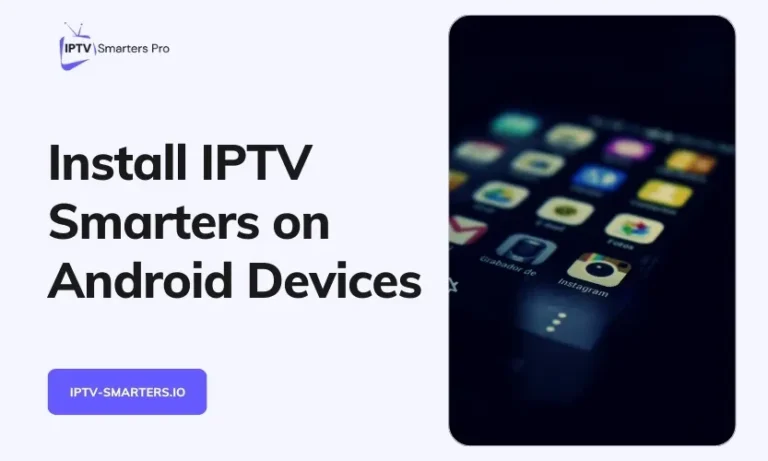Introduction
In today’s digital age, Internet Protocol Television (IPTV) player apps are transforming how we access and consume television content. These apps deliver content over the Internet, offering a flexible and personalized viewing experience that challenges traditional broadcasting methods. This guide delves into how IPTV player apps operate, highlighting their technical architecture, key features, and the top apps available today.
Understanding IPTV Player Apps
What is IPTV?
IPTV, or Internet Protocol Television, refers to a system where television content is delivered over the Internet rather than traditional satellite or cable formats. IPTV allows for streaming live TV, on-demand videos, and interactive multimedia services directly to the user’s device.
How IPTV Player Apps Function
IPTV player apps act as interfaces that enable users to input their IPTV subscriptions or playlists. These apps do not provide content directly but facilitate access to streaming live and on-demand content over the Internet.
Technical Architecture of IPTV Player Apps
Network Layers and Data Flow
The architecture includes:
- Service Network Layer: Manages content delivery and user interaction.
- Bearer Network Layer: Handles the transmission of IPTV content, ensuring optimal bandwidth and quality.
- Service Terminal: The user’s device, such as a smart TV or smartphone, which decodes and displays the content.
Content Delivery Mechanisms
IPTV employs either centralized or distributed systems for content delivery. Centralized systems manage everything from a single point, while distributed systems leverage multiple servers to enhance delivery efficiency and reliability.
User Interface and Interaction
A user-friendly interface is pivotal for IPTV apps, offering easy navigation and content management. Features like Electronic Program Guides (EPG), catch-up TV, and multiscreen support are integral to enhancing user experience.
Key Features of IPTV Player Apps
Multi-Device Support
IPTV apps are compatible with various devices, such as smartphones, tablets, smart TVs, and PCs, allowing users to enjoy content on their preferred devices.
Customization Options
Users can tailor their IPTV experience by customizing interfaces and creating playlists, making navigation intuitive and content access seamless.
Advanced Functionalities
Many apps provide features like scheduled recordings, parental controls, and support for multiple content formats, enhancing user control over their viewing experiences.
Popular IPTV Apps and Their Compatible Devices
Overview of Leading IPTV Player Apps
Here are some top IPTV apps and their compatible devices:
- IPTV Smarters Pro: Compatible with Android, iOS, and Apple TV. It allows streaming live TV, on-demand, and catch-up TV.
- Flix IPTV: Known for its user-friendly interface, compatible with a wide range of smart devices.
- Smartphone IPTV: Offers extensive channel options and VOD content, supporting various smart TVs.
- XCIPTV: Features a customizable interface and supports multiple Android devices, including Fire TV.
- Xtream IPTV: Provides high-quality streaming and a vast content library across several platforms.
- Smart IPTV: Compatible with smart TVs and offers a seamless viewing experience.
- KODI IPTV: An open-source media player that supports live TV, movies, and shows on multiple devices.
Device Compatibility
These apps support a broad array of devices, enhancing accessibility and convenience for users across different platforms.
Advantages and Challenges of IPTV Technology
Benefits of Using IPTV Player Apps
IPTV apps offer flexibility, a broader content range, and integration with other IP-based services like VoIP, providing a comprehensive entertainment solution.
Potential Challenges
Challenges such as high bandwidth requirements, security issues, and network reliability concerns can affect streaming quality.
Enhanced Viewing Features
Interactive TV Features
Features like Video on Demand (VoD), time-shifting, and interactive advertisements provide users with more control over content consumption, significantly enhancing the viewing experience.
Accessibility and User Engagement
Advanced accessibility features cater to users with special needs, ensuring a more inclusive viewing experience.
The Future of IPTV Player Apps
As technology advances, IPTV apps are expected to integrate more interactive and personalized features, cementing their role in the future media landscape.
Conclusion
IPTV player apps represent a major shift in how television content is delivered and consumed. By leveraging internet protocols and streaming, these apps provide flexible, personalized, and multi-device access to live and on-demand programming. While challenges like bandwidth limitations exist, IPTV apps offer interactivity, broad content libraries, and advanced features that redefine the television experience. As the technology evolves, IPTV apps will likely integrate more immersive and customized elements, cementing their integral role in the future media landscape. Ultimately, IPTV player apps are transforming television from a static one-way medium into an interactive and user-controlled entertainment solution.




